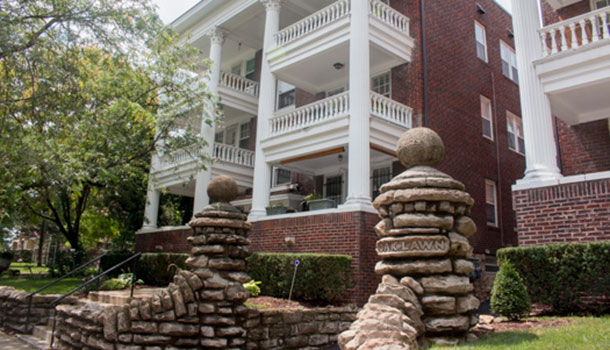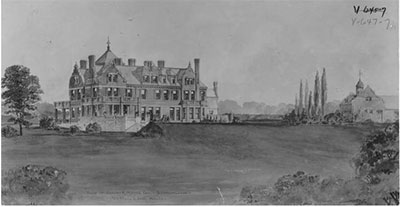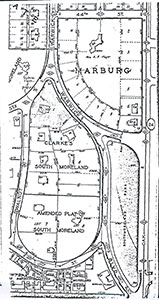
The earliest residents of Kansas City’s Southmoreland neighborhood were wealthy businessmen looking to escape the hustle and bustle of downtown. Even though many of the mansions they built in the late 1880s have not survived, their confidence in the area set the stage for the neighborhood as it stands today.
Historians credit the move of the prominent Meyer family from Independence Avenue south to 44th and Warwick as spurring others to take a chance on the area south of the Hyde Park residential district. Meyer, president of the Consolidated Kansas City Smelting and Refining Company, is best remembered as president of the Board of Parks and Boulevard Commissioners when Kansas City’s park system was built.

Drawing courtesy Kansas City Public Library, Missouri Valley Special Collections.
Meyer felt he had room to spread out when he built his mansion on 8.5 acres at 4415 Warwick in 1895-6. Although it seemed far from city life in this drawing, Meyer’s home became the home of the Kansas City Art Institute in 1928.

Meanwhile, the rest of the Southmoreland subdivision, platted in 1889, filled in. Meyer was joined by wealthy civic leaders like W.A. Rule, who built his excellent stone home at 43rd and Oak. In 1904, R.E. Brunner built Mineral Hall with its famous doorway. Brunner was a mining magnate who embedded mineral samples into the interior stone walls of the first-floor library.
To the north of the mansions, a streetcar line attracted working-class residents to Southmoreland. The Lee K. Mooney Company advertised lots in 1894, promising a fine suburb surrounded by stately homes at $500 to $1250 an acre. “A place to invest your money where it can’t get away. Better than gold dollars. Just as safe and it will increase in value every year. Don’t wait longer to buy. You will never get cheaper property than this.”
Like many Kansas City neighborhoods, developers saw the potential for apartments to provide space in expanding Kansas City. The Rule homestead, for example, was sold off in pieces and eventually became the site of ten six-apartment buildings in the 1920s.
The stone wall around the property, however, was left, and the stonework in Southmoreland and Southmoreland Park continue to give the neighborhood a unique character.
Hopefully the encroaching Art Gallery will not bulldoze the beautiful homes that remain, and of course they own many of them.